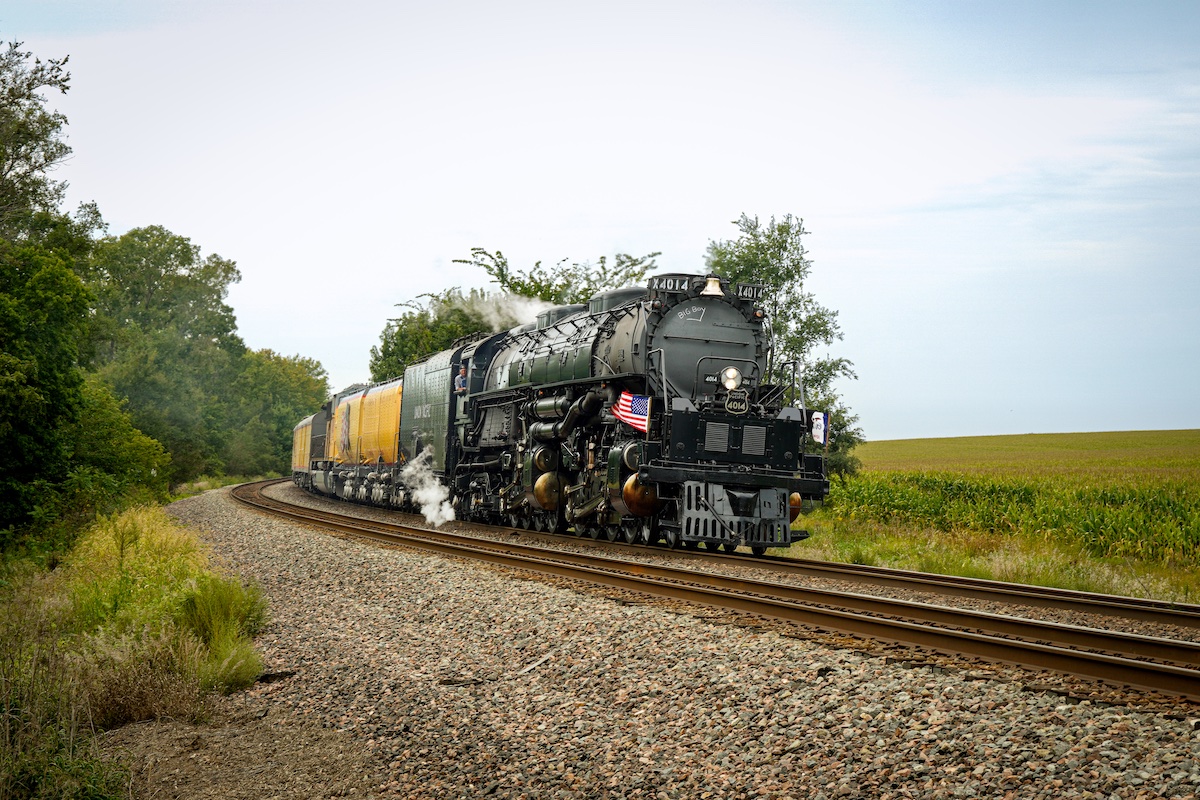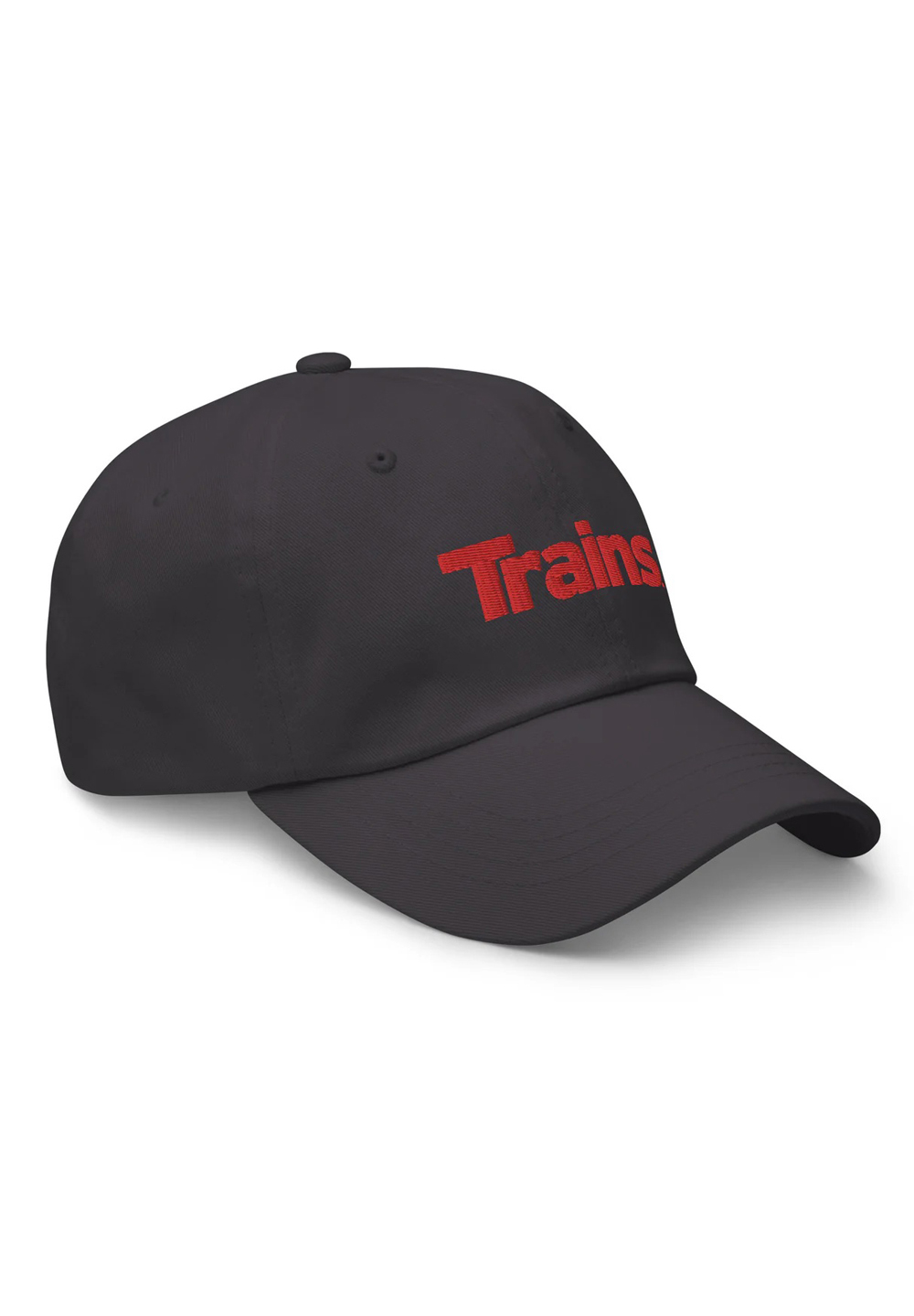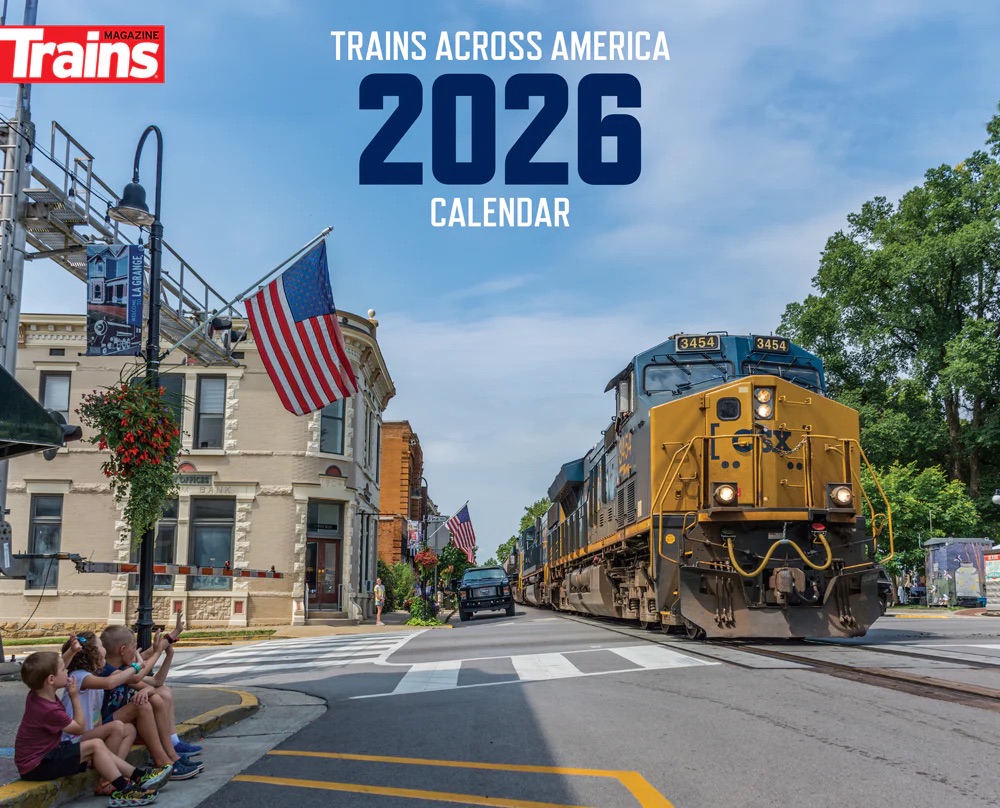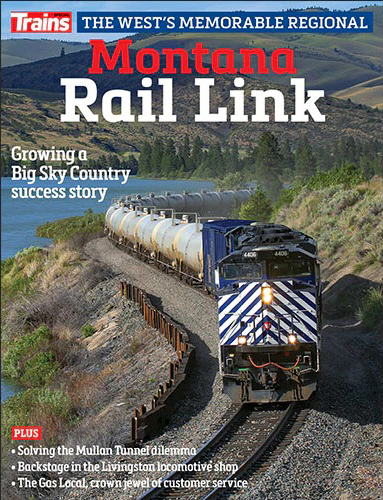Union Pacific Big Boy Home Run Express

It’s the bottom of the ninth. Wyatt Langford, center fielder for the Florida Gators, digs into the batter’s box. The situation is classic baseball: The 2023 NCAA College World Series, Virginia vs. Florida, home team down 5-3, and looking to rally. Virginia pitcher Jake Berry goes into his windup and hangs a change-up right over the middle of the plate. The ting of Langford’s aluminum bat making contact reverberates around Charles Schwab Field Omaha.
Every Florida fan in the house knows immediately that ball is headed out of the park. A few seconds later, Langford’s hit drops into the left field bleachers 456 feet from home plate — a new home-run distance record for the Men’s College World Series. The game is tied, and the Gators go on to win, eventually advancing to the CWS finals, where they lose their bid for the national title to the LSU Tigers.
Home plate inside Charles Schwab Field Omaha is but one focal point during the annual collegiate baseball tournament. There is a second home plate involved in the festivities surrounding the CWS. This one highlights a long-standing railroad connection.
Step outside the stadium in Omaha, Neb., and across Cuming Street. At the corner of 12th Street and Cuming, you’ll find the second home plate. This one belongs to the Union Pacific Railroad. During the 2023 CWS, UP hit a home run of its own by spotting Big Boy No. 4014 on the display track located here, as part of its Home Run Express tour. From June 15 through 26, No. 4014 not only became part of the baseball celebration, but also marked a homecoming of its own.
In Omaha today, the 100-acre tract beginning at the corner of 9th and Webster streets, looking northwest, is filled with hotels, a convention and entertainment venue, parking lots, dozens of small businesses, and Charles Schwab Stadium Omaha.
From 1865 through its closing in 1988, this was the site of UP’s massive Omaha shop facility. Car and locomotive repairs were completed here. The railroad modified and fabricated cars in the shops as well. The first McKeen motorized railcars were built here. The self-propelled passenger vehicle was designed by William McKeen, UP superintendent of motive power and machinery. In the early 1940s, as Alco delivered the 4000-class locomotives — the Big Boys — they were directed to the Omaha shops for final preparation before revenue service.
In 2022, anticipation was high No. 4014 would make a longer trip, possibly through California via Donner Pass and then onto the Pacific Northwest. That longer trip did not happen. It was replaced with the shorter run from UP’s steam home base in Cheyenne, Wyo., across Nebraska to Omaha for the NCAA Men’s College World Series. On the way to Omaha, Big Boy traveled through some unusual territory, running over the Yoder and South Morrill subdivisions before taking to the Overland Route for the trip’s final leg.
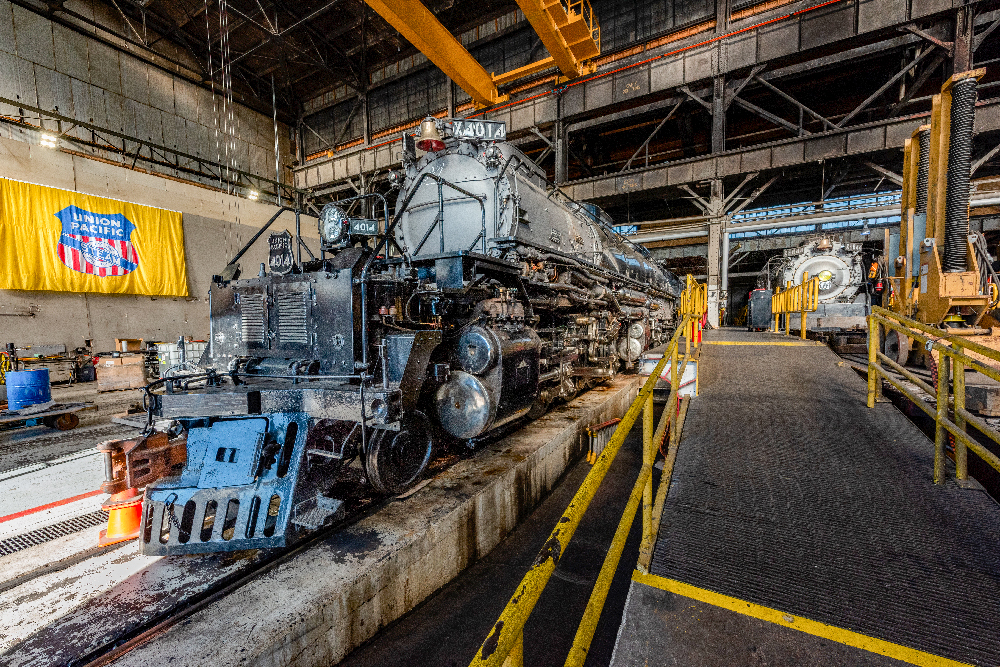
A family team
Baseball, like any sport, is a chess game. To come out on top, as the LSU Tigers did, a team must think three, four, even five moves ahead. Every member of the team and every action they take must meld together in a near-perfect manner to achieve the desired outcome. The team that grows in this fashion becomes a family unit, anticipating each other’s moves, complementing strengths, and supporting falters — all while continuing to work toward the common goal of an outstanding performance.
For the CWS, another team, beyond the eight competing in stadium, played to a championship level. The game was not baseball, but running and exhibiting the world’s largest operating steam locomotive. The Union Pacific steam crew — no, steam family — turned in a performance that thrilled more than 52,000 fans at stops in eastern Wyoming and across Nebraska. The railroad estimates that 30,000 people visited the Big Boy at its Omaha Home Plate.
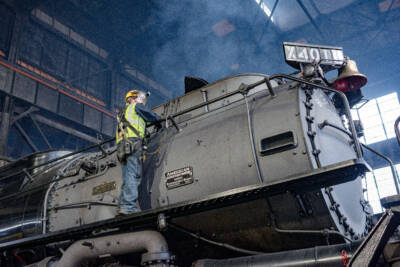
Two members of the UP steam crew are its qualified firemen: Austin Barker and Kirt Clark. When No. 4014 is running, one of them will be on the left side of the cab tending the fire, monitoring the boiler water level, and listening and watching to help ensure the locomotive is working properly.
Barker, 35, studied mechanical engineering at Colorado State University prior to signing on with UP. Clark, 45, was a UP locomotive engineer with a mechanical background who transferred into the steam program.
“My family has steam tractors and a 24-inch gauge tourist railroad with steam engines that I was around when I was a little kid,” Barker says. “I always was infatuated with steam locomotives and big machinery.” After an internship with John Deere, Barker visited UP’s booth at a CSU job fair. He discovered there was an opening for a machinist in the steam program. You know the rest of this story.
Clark found his way onto the steam crew with a solid mechanical background, good timing, and “clean living,” as he says.
“You know timing is everything,” says Clark. “When I applied, they actually had a position that was open. I sent in my resume a couple hundred times to be persistent and let them know I was serious. It helped that I had a mechanical background before I went to work for the railroad.”
Both men indicated mechanical aptitude was only part of the qualification for the steam crew. “A big part of the interview process,” Barker says, “is to see how you perform and what you’re willing to do, and how hard you’re willing to work. And there was also kind of a nuance as to how you fit in with the team.”
Going on the road
Any time No. 4014 goes on the road, there is a considerable amount of planning to ensure a safe and successful trip. That planning is the bigger picture involving details like bridge clearances, siding length, and the location of fire hydrants for water [see “Big plans,” Trains, January 2022].
For the firemen, the planning is considerably more fluid. Their experience has led them to know the basic requirements to keep the Big Boy operating safely. Fine-tuning the daily routine is based on the circumstances as they present themselves along the trip.
“The Yoder Sub doesn’t have any super steep grades … we already know where we want to be on our water levels going up and down grade,” Barker says. “The only time we’ve ever done any kind of pre-trip thinking or calculations for [boiler] water level … would have been when we went over Cajon Pass in 2019.”
California’s Cajon Pass presents grades up to 3%, which is something the 4000 class did not encounter in regular service. For Barker and Clark, firing No. 4014 on a 1.5% grade is a standard procedure — it’s something the Big Boy is designed to do.
Normally, to prepare for the day’s run, the firemen review the local track charts as part of their morning routine. Throughout the day, schedule delays, changes in weather, who is on duty, and their accumulated hours of service can all impact how the firemen handle their responsibilities.
When traveling in new territory, like the Yoder and South Morrill subs, Barker and Clark have two other ways to learn the territory on the fly. There is a pilot conductor, who is qualified on the territory, along in the cab. He is there to explain the route as needed. And, as Baker says, “ … this is where the PTC [positive train control] screen comes into play. It will show the grade coming and that’s helpful.”
Mounted next to the engineer’s seat in No. 4014’s cab is a two-sided PTC monitor. It provides real-time trip information like current speed, track speed limit, grade, a track schematic, and operational data, along with a look at what’s ahead.
“I use it as a cheat sheet,” Clark added. “I can just look over, and, oh, here it comes [a grade] or, we’re about to top over.”
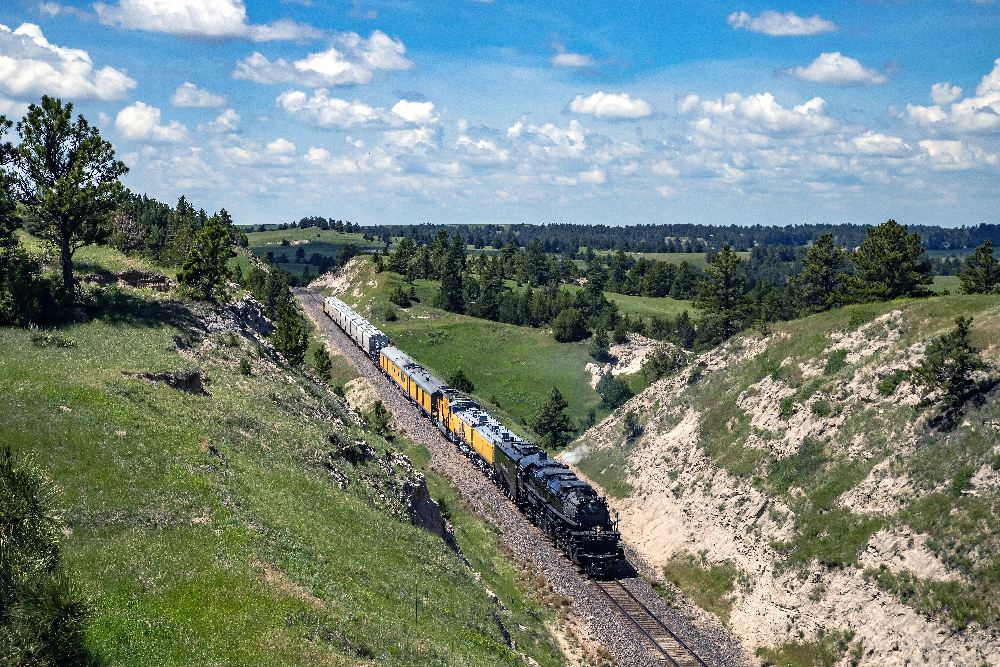
Listening, looking, smelling
While moving, the fireman needs to engage all of his senses to do the job. The cab is loud, requiring hearing protection, so communication is accomplished with hand signals. Barker and Clark pointed out that in the cab, “usually yelling means an emergency.” If hand signals don’t get the message across, you walk over to the person and speak with them. Yelling is a sign that there is serious trouble and is reserved for such occasions.
The fireman is constantly listening to the exhaust, for the sound of the change-over valve in the exhaust steam injector, excessive rod noise, and any of dozens of other sounds.
“There’s a million things that you want to be listening to, not only listening to, but looking for,” Clark says. “Is there smoke where there’s not supposed to be smoke? Do you smell anything hot? You’ve got to have all your senses about you …”

There is no manual from which a fireman can learn what the proper sounds are for a steam locomotive.
Barker pointed out that how a steam locomotive is to sound, appear, and smell are skills acquired with experience. He also commented that once you have learned the various sounds, sights, and smells, the fireman needs to understand how to react to each of them.
“I’ll listen for when [the engineer] sets [the brakes]. You can hear the direct exhaust from the brake stand,” Barker says. “Now the train is going to start slowing down a little bit. The water level in the glass is going to go down just a little bit, so I’ll be watching for that.” The water moving forward in the boiler is a normal reaction to the brake application and causes the fluctuation. The level in the water glass should return to its previous position as Big Boy’s speed stabilizes.
Meanwhile …
With the Big Boy spotted at UP’s Home Plate for 11 days, Barker and Clark had time to enjoy the CWS baseball action.
Actually, they didn’t.
“Kurt and I both came back to the shop,” stated Barker. “We got the engine on the spot and then came back to the shop and cleaned the floor.”
Did these guys draw the short straw? No, it is all part of the dedication and pride the UP steam crew shares in what they do and where they work. The steam crew and locomotives are based in the remaining portion of the Cheyenne, Wyo., backshop. At 132 feet, 97/8 inches long, and 11 feet wide, Big Boy occupies 1,460 square feet of shop space. Add on a working area around the locomotive, plenty of grease, oil, and accumulated road dirt, and cleaning the floor becomes a serious task. Keeping the floor and the rest of the shop clean makes for a more efficient and safe work space. Hence, when Big Boy is away from home, it is prime time to complete some housekeeping.

Once Big Boy returns to Cheyenne, the team begins a series of inspections.
“After a trip we start a 31-day inspection, which involves a boiler wash and going through the locomotive, inspecting various parts to make sure they are safe and suitable for service,” Barker says.
In sequence and at the appropriate time, the team also completes 92-day and 365-day inspection protocols. Each inspection builds on the previous, with the result being a historic vehicle that is in better mechanical condition than any time in its 82-year existence.
One of the first steps in the inspection process is separating the locomotive and tender. Once they are apart, the drawbars can be examined easily, checking for any defects that may have developed.
The crew also does an extensive amount of cleaning on Big Boy, most of which is done by hand.
“That hands-on time that we spend scraping the grease off and wiping each component gives us a chance to thoroughly inspect and look for any kind of defect or signs that something might not be wearing as well as we would hope,” Clark says.
As part of the 31-day inspection, No. 4014 goes through a boiler wash. This is an involved process, as there are 56 washout plugs on the boiler. Each plug is removed, inspected, and cleaned. Then the boiler is washed through each port with the plug removed.
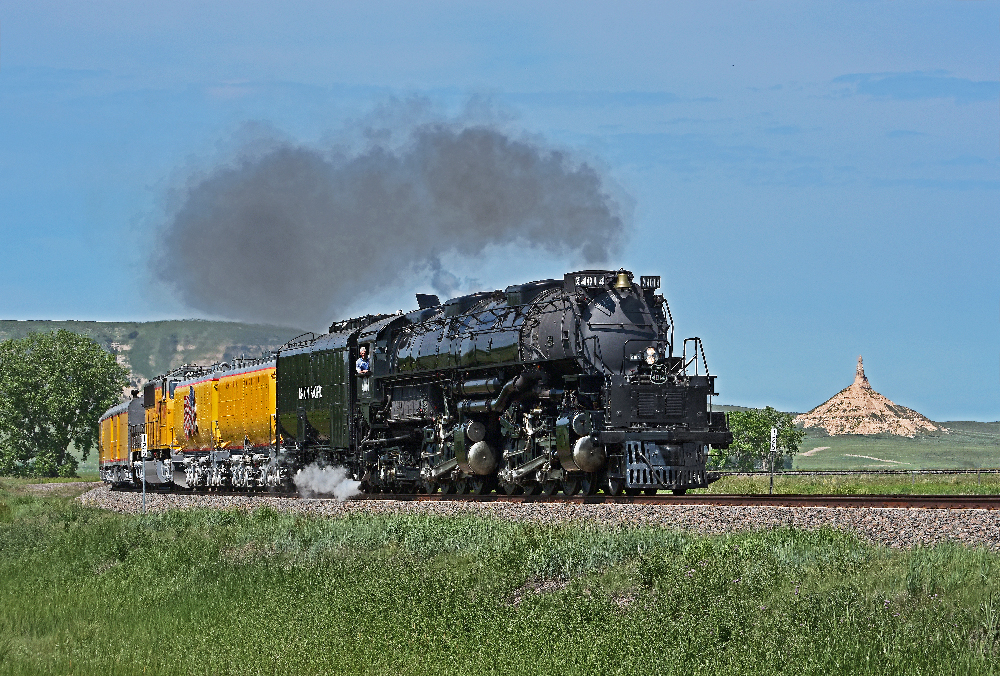
You just have to be there
Barker and Clark are proud of their contribution to the Union Pacific’s steam program. The historic significance of the equipment they help care for and operate is not lost on them. Both firemen are continually amazed by the number of people who turn out when the Big Boy rolls into a town.
They, as well as the rest of the team, want every appearance to be positive for those experiencing the locomotive and for the Union Pacific. They also take away a great degree of personal satisfaction from their work and enjoy the thrill of working on and running the only operational Big Boy.
Reflecting on the Home Run Express trip, Barker found one of those satisfying moments while running on the Yoder Subdivision: “There’s a tunnel out in the middle of nowhere, where you wouldn’t think there would be one. It’s pretty neat, neat territory up there. We’re away from the main lines, so you can just kind of cruise, look at the scenery, and not have other trains blowing your doors off.”
For Clark, “There are certain moments or stretches of railroad on this vast network where you just sit back and everything kind of fades away. You get a glimpse of how it was back in the ’40s. When you get those moments, it’s amazing.”
Both agree it is an honor and a privilege to be part of UP’s heritage steam operation.
“There is a tremendous sense of pride to be able to do what we do,” Barker says. “It is humbling that so many people are interested in what we do or would love to experience what we do. To go out and be able to share that with so many people is pretty cool.”
In the end, you just have to be there to experience the Big Boy, a living legend of steam power.
Barker said it best: “You try to describe what it’s like at 2 in the morning, leaving Rock Springs [Wyo.]. You’re firing a Big Boy and there’s 844 behind you. The moon is shining off the creek and all you can see is the flicker of the fire off the rail next to you. The dynamo is whining, and the lights are reflecting off all kinds of things. That was pretty cool.”
That is what drives Barker, Clark, and the rest of the Union Pacific steam crew. And that is why No. 4014 is like hitting a home run — you have to experience it.
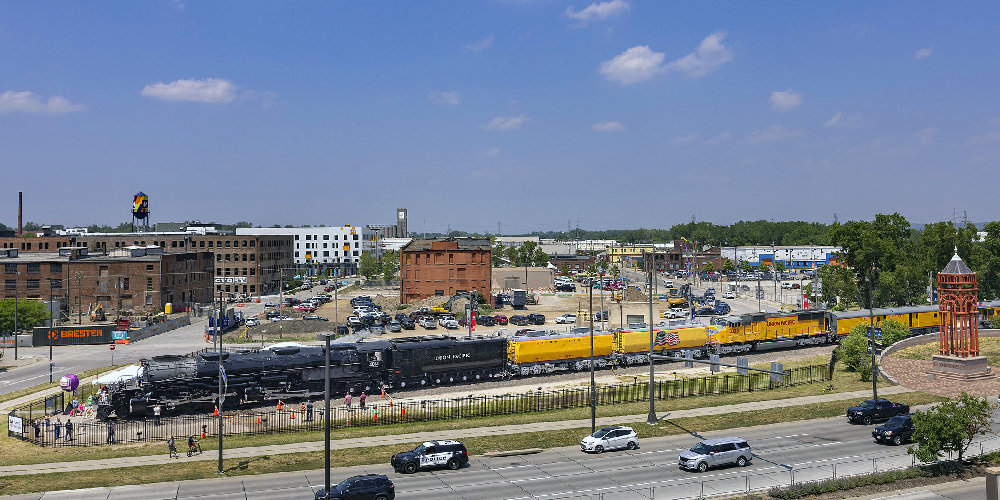
This story is part of Trains’ Steam Across America special publication. The entire volume is available in the trains.com Store.






